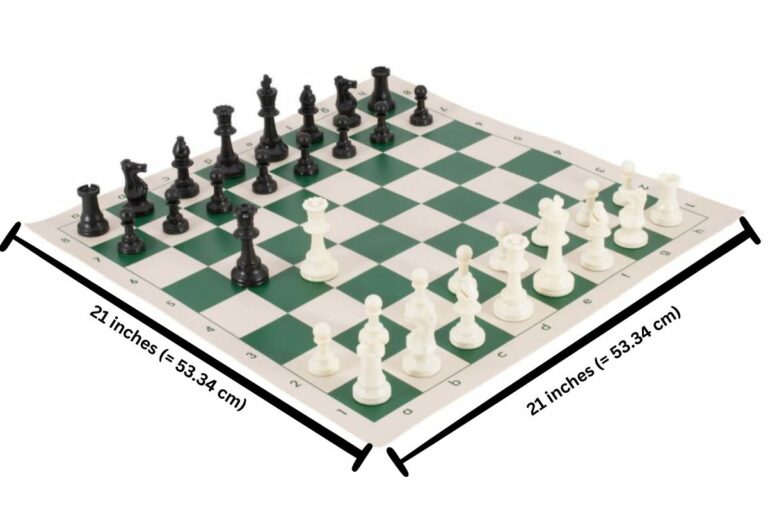Why Is Chess Separated by Gender? Gender Inequality in Chess Explained
Chess is a game that has been enjoyed by people of all ages, genders, and backgrounds for centuries. However, one peculiar aspect of the chess world is its division by gender, as there are separate competitions for male and female players, with separate rankings, prize money, and titles.
So, why is chess separated by gender? This question has sparked a lot of debate in the chess community.
Chess is separated by gender due to historical and cultural reasons, with the aim of promoting fairness and inclusivity. However, this practice has been controversial, with some arguing that it reinforces gender stereotypes and hinders women’s participation in the game.
Keep reading to learn more about why chess is separated by gender and whether men are actually better than women in chess.
Why Is Chess Separated by Gender?

The practice of separating chess tournaments by gender has its roots in historical and cultural reasons. In the early days of competitive chess, men greatly outnumbered women in the game, and tournaments were often exclusively for men.
As women began to play more frequently and achieve success, separate women’s tournaments were established to promote their participation and provide opportunities for competition.
Today, most major chess organizations have separate competitions for men and women, with separate rankings, prize money, and titles. Women’s tournaments often have lower entry requirements and lower prize funds compared to equivalent men’s tournaments.
There are also specific rules for women’s participation in chess tournaments. For example, women can earn separate titles like Woman Grandmaster (WGM) or Woman International Master (WIM) by achieving certain rating levels and performance criteria in women’s tournaments. However, these titles are not equivalent to the Grandmaster (GM) or International Master (IM) titles earned by men, which are seen as more prestigious.
The rationale behind gender separation in chess is to promote fairness and inclusivity and to encourage more women to participate in the game. However, the practice has been controversial, with some arguing that it reinforces gender stereotypes and creates a separate and unequal playing field.
Luckily, there are efforts being made to address this issue and promote greater gender diversity in chess. Organizations like the Women’s Chess Federation and the Kasparov Chess Foundation have established programs to promote women’s participation in the game and provide opportunities for advancement.
Why Is Chess A Male-Dominated Field?

Chess has historically been a male-dominated field due to a combination of societal factors and cultural norms.
In the past, women were discouraged from participating in intellectual pursuits like chess and were often not given the same opportunities as men to learn and play the game. This has led to a gender imbalance in the number of men and women who play chess competitively.
Another factor contributing to the male dominance of chess is the lack of representation of women at the highest levels of the game, as the vast majority of top-ranked players in the world are men.
The ratio between male and female chess grandmasters is heavily skewed towards males. As of May 2023, there are 1726 male grandmasters compared to only 39 female grandmasters recognized by FIDE (World Chess Federation).
There are also systemic issues within the chess world that have made it difficult for women to participate and advance in the field. Women’s tournaments often have lower entry requirements and prize funds compared to men’s tournaments, which can discourage women from pursuing a career in competitive chess.
Additionally, women players have reported experiencing gender discrimination and harassment, which can create a hostile environment and limit their participation in the game. According to social psychologists, women in traditionally “masculine” roles often face hostility and insults, leading them to drop out of chess and lose their higher ranks.
Even Jennifer Shahade, a female Grandmaster and two-time United States Women’s Champion, has experienced misogynistic insults despite playing at the highest levels of chess, which led her to create an art project featuring an oversized chess board covered with insults female players have faced.

Are Men Actually Better than Women in Chess?
There is no inherent biological or genetic reason to suggest that men are better than women at chess. But, as mentioned before, there are cultural and social factors that have historically created barriers to women’s participation in the game, leading to a gender imbalance at the highest levels of competition.
Studies have shown that men and women have similar cognitive abilities relevant to chess, such as spatial reasoning and memory. However, women are underrepresented in the pool of competitive chess players, which may be due to a lack of opportunities or encouragement to learn and play the game.
When women do have the opportunity to compete on an equal playing field, they have achieved success at the highest levels of the game. For example, Judit Polgár, a Hungarian chess player, became the youngest grandmaster in history at the age of 15, breaking Bobby Fischer’s record, and has defeated many of the world’s top male players.
Some of Judit’s chess-related achievements include:
- Winning her first international tournament in New York at age 9
- Defeating a Grandmaster in Brussels at age 11,
- Becoming a world youth champion among boys at age 12
- Winning the first Women’s Olympic Champion title in Hungarian chess history
- Winning the Hungarian Men’s Super Championships
- Defeating 11 out of 20 world champions in chess history when she played for the men’s world title in San Louis in 2005
These are just a few examples of her many accomplishments, proving that women can excel in chess. Her success not only broke several records but also inspired numerous women to feel confident playing chess.
You can hear more about Polgar’s story in her Ted Talk:
You can learn more about the amazing story of Judith and her sisters in the book:
I highly recommend it. Not only is it a worthy read for any chess player, it’s a very inspiring book for any parent.
Are Men Paid More Than Women in Chess?
Men are typically paid more than women in chess tournaments.
For instance, Magnus Carlsen and Hikaru Nakamura were the highest earners in chess in 2022, with net worth estimated to be $50 million each, while other players like Ian Nepomniachtchi had a net worth of $10 million.
On the other hand, Female Grandmasters like Alexandra Kosteniuk, Hou Yifan, and Humpy Koneru has an estimated net worth of approximately $1.5 million, while Judit Polgár’s net worth is estimated to be between $3-5 million.
The reason for this is that women’s tournaments often have lower prize funds compared to equivalent men’s tournaments, even at the same level of competition. Additionally, women players may not have the same opportunities as men to earn sponsorships or other sources of income related to their chess careers.
This pay disparity has been a point of controversy in the chess world, with many advocating for equal pay and greater recognition for women’s achievements in the game. Some organizations have taken steps to address this issue by increasing the prize funds for women’s tournaments and advocating for greater gender equality in the sport.
How Can Women Overcome Gender Inequality in Chess?

To overcome gender inequality in chess, it is essential to address the cultural and systemic barriers that have historically limited women’s participation and advancement in the field. Here are some strategies that can help:
- Create more opportunities: One way to promote greater gender diversity in chess is to create more opportunities for women to learn and play the game. This can involve organizing more women’s tournaments, providing training and coaching programs specifically for women, and promoting chess in schools and other educational settings.
- Address pay disparities: Women in chess are often paid less than their male counterparts, even at the same level of competition. Addressing this pay disparity by increasing the prize funds for women’s tournaments and advocating for equal pay can help to create a more level playing field for all genders.
- Combat gender discrimination: Women in chess have reported experiencing gender discrimination and harassment, which can create a hostile environment and limit their participation in the game. Addressing these issues through clear policies and enforcement mechanisms can help to create a safer and more inclusive playing field for all players.
- Promote female role models: Highlighting successful women chess players and promoting them as role models can help to inspire and encourage more women to participate in the game. This can involve featuring them in media coverage, providing opportunities for them to speak about their experiences, and promoting their achievements through social media and other channels.
- Encourage mixed-gender play: Encouraging mixed-gender play and creating opportunities for men and women to compete together can help to break down gender barriers and promote greater gender equality in chess.
How The Queen Gambit Changed Public Perception Of Female Chess Players

Netflix’s The Queen’s Gambit, a limited series released in 2020, has had a significant impact on the public’s perception of female chess players.
The protagonist, Beth Harmon, is a young female chess prodigy who faces numerous challenges in her quest to become a world champion. The series has been praised for its nuanced portrayal of female characters and its exploration of themes such as addiction, trauma, and resilience.
One of the key ways in which The Queen’s Gambit has changed public perception about female chess players is by showcasing their talents and highlighting the unique challenges they face.
The series portrays Beth as a complex and relatable character rather than a one-dimensional stereotype. This has helped to challenge stereotypes about women in chess, such as the idea that they are not as talented or competitive as male players.
Another way in which The Queen’s Gambit has changed public perception is by highlighting the historical and cultural barriers that have limited women’s participation in the game.
The series is set in the 1960s, a time when women were often discouraged from pursuing careers in male-dominated fields such as chess. By portraying this historical context, the show has helped to shed light on the challenges that women have faced in the game and the progress that has been made over the years.
The Queen’s Gambit has also helped to increase interest in chess among the general public, including women and girls. Since the show’s release, there has been a surge of interest in online chess platforms and chess clubs, particularly among women. This has helped to create more opportunities for women to learn and play the game, as well as to compete at higher levels.
Conclusion
Overall, creating a more inclusive and equitable playing field for all genders in chess requires a multifaceted approach that addresses both cultural and systemic barriers. By promoting greater gender diversity and equality in the game, we can help to unlock the full potential of all players, regardless of gender.
If you did find this article helpful, please consider sharing, as it can help this little site grow 🙏








